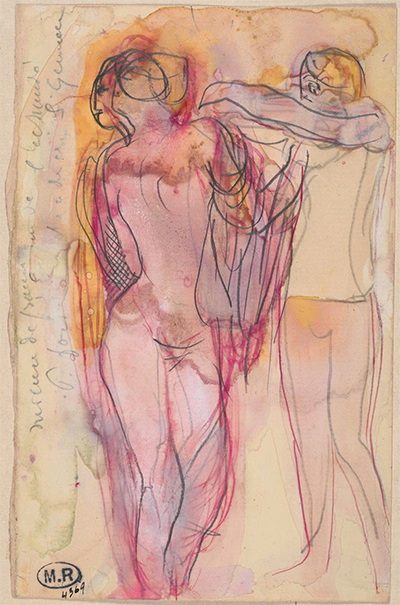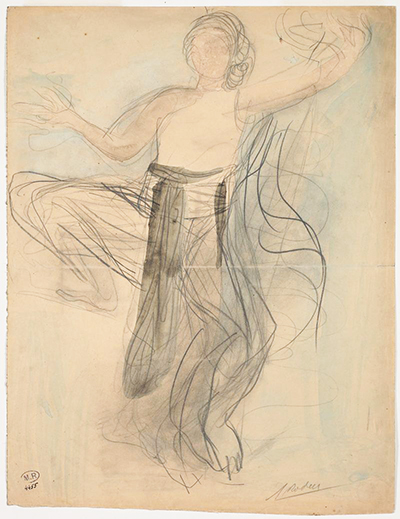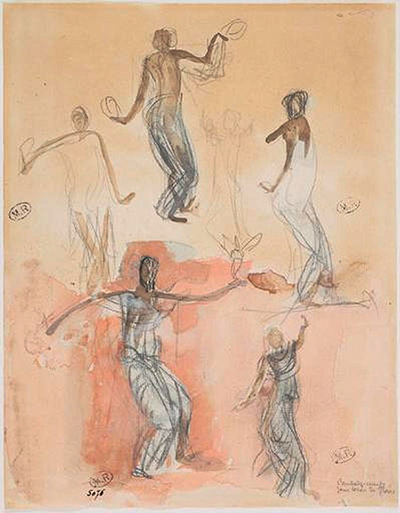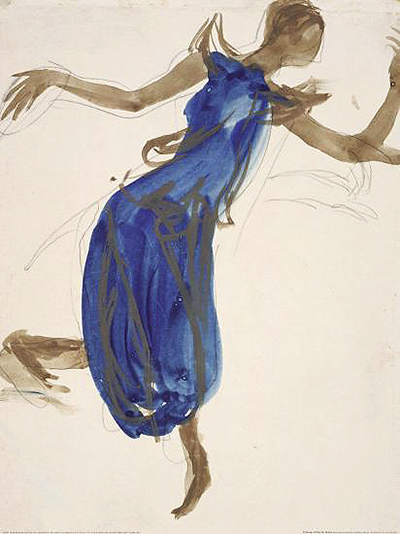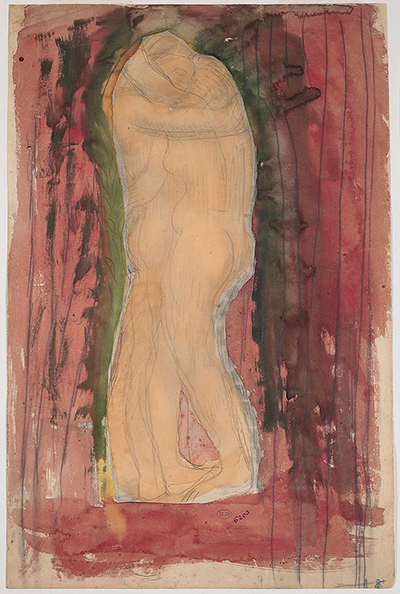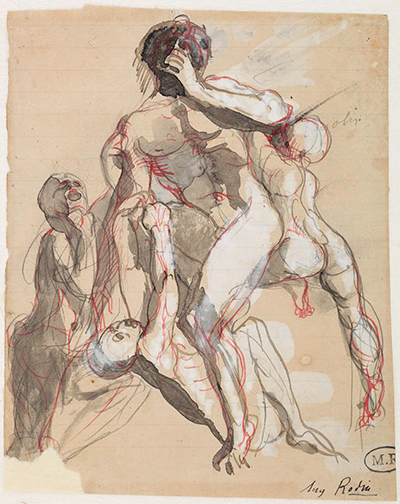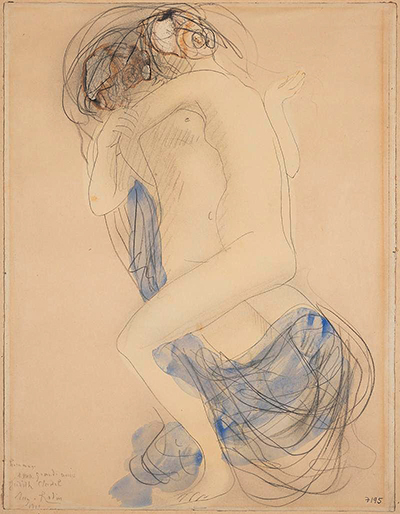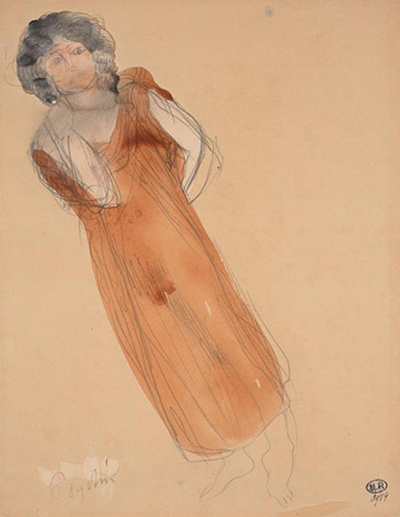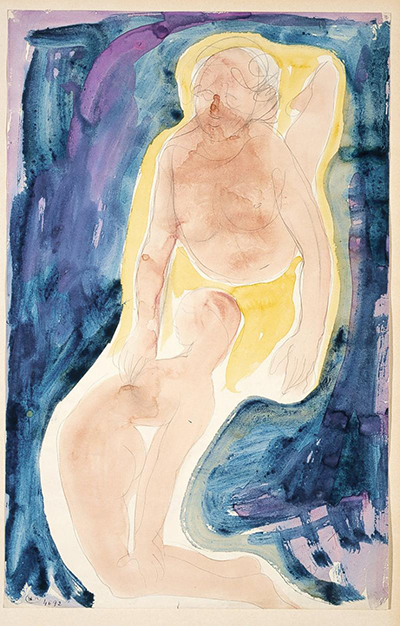Auguste Rodin was a highly skilled draughtsman and also exceptionally prolific yet his work in this medium continues to be overshadowed by his achievements in sculpture.
Auguste Rodin used a wide variety of techniques and tools in his drawings, including different combinations of graphite pencils, gouache, watercolour, pen and ink, plus other coloured pencils. The artist would have different preferences at different stages in his career but consistently experimented with different combinations of these as well as other alternatives. Rodin considered drawing to be a fundamental part of his artistic process and is believed to have produced as many as 10,000 original drawings during his lifetime. The breathtaking Musée Rodin in Paris holds around 70% of this output and attempts to display as many as is humanly possible, recognising the significance of this art medium within his career.
Rodin was an artist who desired momentum and change throughout his career. He felt that standing still was regressing and he used this philosophy in both his drawings and sculptures. In order to feed this drive for change, invention and development he would always be hunting around for new sources of inspiration.
Rodin's Early Years as a Draughtsman
"I maintain that before drawing on plaster, you must begin by drawing on paper; I myself was a draftsman before I was a sculptor."
"Rodin par lui-meme," Je sais tout, 1910.
The budding student displayed a talent for drawing that potentially could make up for his lack of discipline in his other academic studies. Poor grades meant that his father had no real option but to encourage his son to pursue an artistic career which began at the Ecole Imperiale Speciale de Dessin et Mathematiques, or Petite Ecole as it is more commonly known. Rodin would study there from 1854 to 1857.
The young man had clearly found his passion at last, taking every spare opportunity available to practise his craft. At this stage he was not specialising in figurative art as he would later do, taking all manner of themes into his development, including drapery and still life studies, frankly whatever was available. Outside of his classes he would continue to practice as his enjoyment of art started to reach the levels of an obsession. Rodin would even make use of the Louvre to produce significant study drawings before then started to experiment with sculpture for the first time in around 1860.
The Artist's Sources of Inspiration
Dance was to be one of the most important influences on Rodin, though he was not obsessed with classical ballet in quite the same way that Edgar Degas so famously had been. The fluid movement of dance offered greater opportunities than that found with the pre-meditated nature of modeling. It seems he preferred a more solid, aggressive version of the art form, such as with Cambodian dancing which he got to enjoy several times in Paris as part of regular cultural exchanges at around that time. This source of inspiration would lead to an output of several hundred drawings and watercolour paintings.
Following shortly after this was an experience with a Japanese troupe which left and equally strong impression on artist Rodin. He was particularly enchanted by a member of the group called Hanako and he would employ her services on several occasions between 1907 and 1911. He would go on to produce some fifty sculptures of her, inspired by her asian frame which he considered so different to what he had come across in Western Europe up to that point. He would portray her in a variety of different moods and this ranks as one of his largest series of work. Joining the sculptures were multiple drawings which attempted to communicate the expressive nature of her movement.
Western dance would then go through somewhat of a change, re-connecting with it's ancient path. Rodin's reputation was also now at an all-time high and this ensured that all of the most famous dancers across Europe would be keen to be captured by this creative genius. Indeed they felt this was an artist who understood them perfectly and would, literally, bend over backwards to be included in his growing collection of sculptures and drawings. There is also a considerable collection of photographs from this period which help to outline the processes that he went through in order to capture the beauty of dance in his work.



